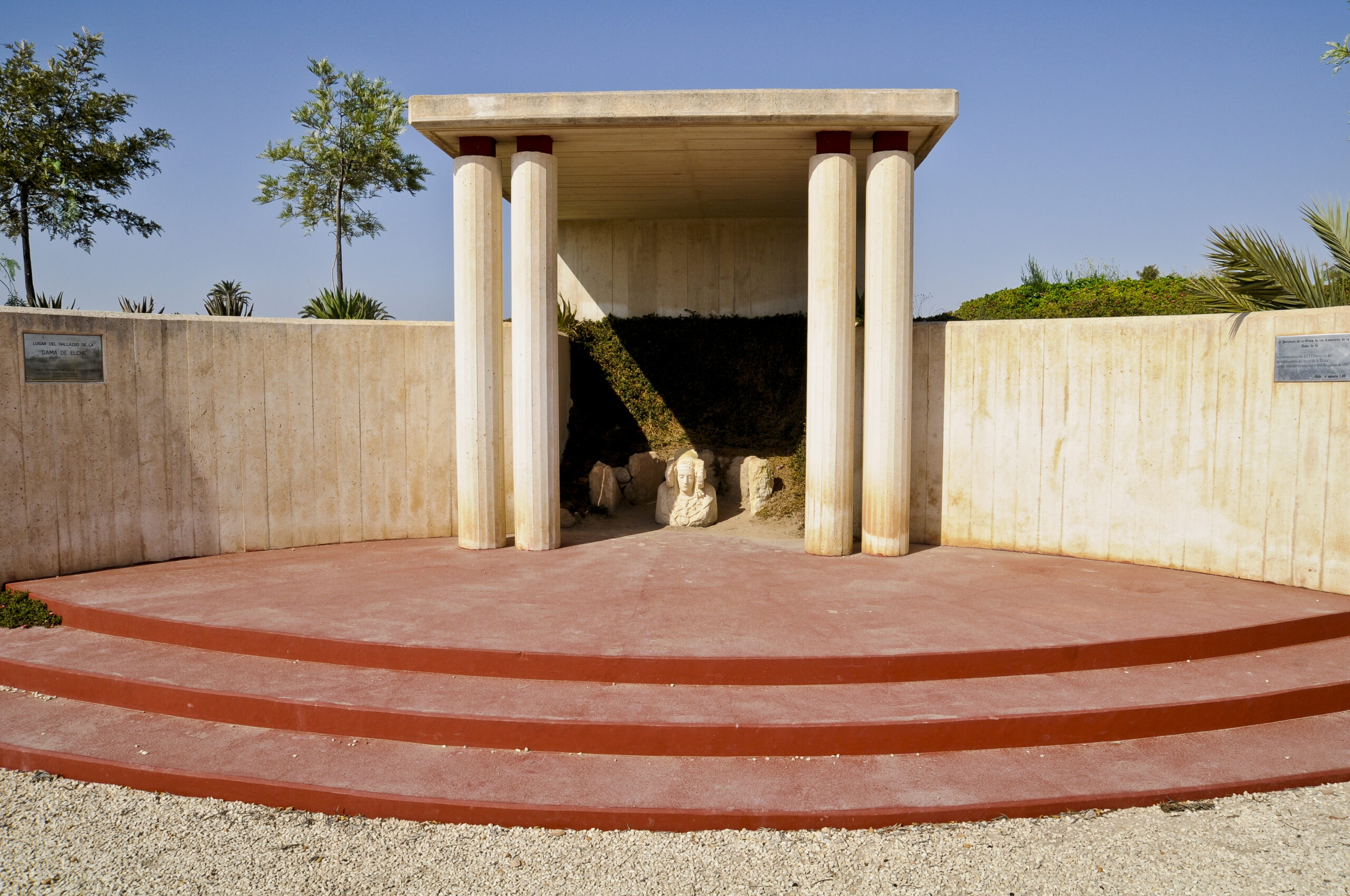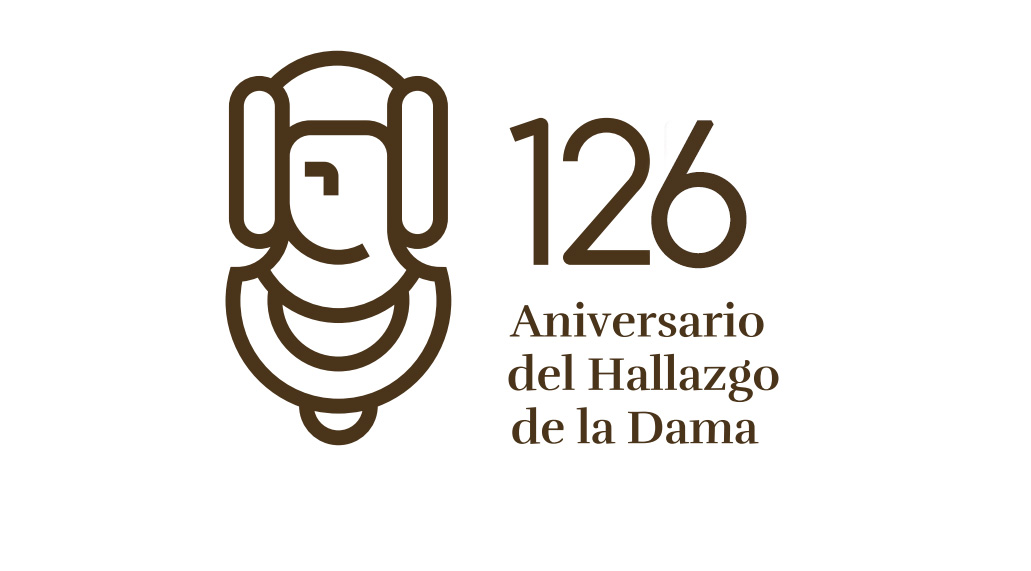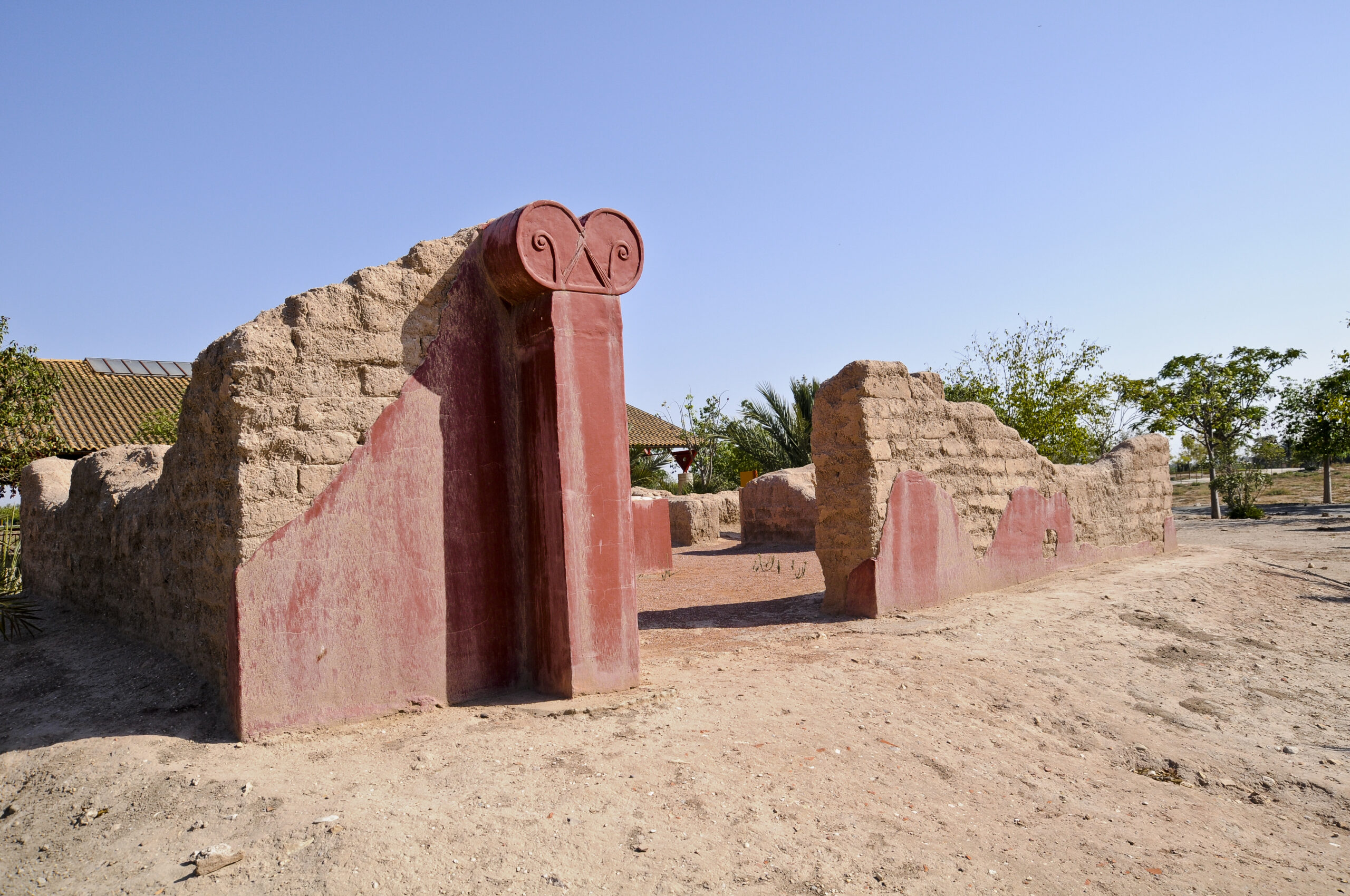The Lady of Elche, discovered in the Alcudia Archaeological Site, is one of the world’s most renowned pieces of sculpture.
She is currently housed in the National Archaeological Museum in Madrid.
ELCHE, LA CIUDAD DE LA DAMA
Elche, a city of culture and heritage with a great historical legacy, celebrates the 125th Anniversary of the Discovery of the Lady of Elche this year. A masterpiece of Iberian art that was found by chance in 1897 in the present-day La Alcudia Archaeological Site, home to the Iberian city of Ilici and later Roman colony Iulia Ilici Augusta.



The discovery of the Lady of Elche
On Wednesday 4th August 1897, an 18-year-old young man, Manuel Campello, who was doing some farming work in Alcudia, found a stone. When he removed it, the face of the bust was revealed. The sculpture was leaning slightly to the right, facing southeast, on two stone slabs. Its location and position reveal that it was intentionally concealed, since, to protect it, a semicircle of protection slabs was built to demarcate the necessary space to house the sculpture.
Once the piece was placed, the space was filled with sand from the beach of La Marina in Elche, causing the Lady to keep at the moment of its discovery a significant part of its polychromy preserved.
The sale
On 11th August the French archaeologist Pierre Paris arrived in the city to attend the performances of the Misteri (Mystery Play), invited by the municipal chronicler and archivist Pedro Ibarra. That very same day and the ones that followed, he showed his enthusiasm for the possibility of buying the work for France, and due to a series of circumstances, it was agreed to sell it for 4,000 francs (5,200 pesetas at the time). The sculpture was on display in the Louvre in Paris for more than four decades, and it was there that it was named Lady of Elche.
Return to Spain
On 8th February 1941, the Lady crossed the border at Portbou by train en route to Madrid along with other Spanish artistic and archaeological works.
After her brief visit to Elche in 1965, for 14 days on the occasion of an exhibition on Iberian culture, the Lady was transferred from the Prado to the National Archaeological Museum in Madrid.
In 2006, on the occasion of the inauguration of the MAHE (Archaeological and History Museum of Elche), the Lady of Elche spent almost six months back in her city of origin, where she was insured for 15 million euros.
The sculpture
From a technical point of view, the sculpture known as the Lady of Elche is a round bust sculpted in biocalcarenite fossiliferous limestone from the El Ferriol quarry in Elche (P. Rouillard and his team, CNRS (French National Centre for Scientific Research), 2007), located 9 km away from La Alcudia of Elche, the archaeological site where she was found by chance on 4th August 1897 while some farming work was taking place.
She measures 56 cm high, 49 cm wide and 37 cm deep at the base. She weighs 65 kg

Some hypothetical reconstructions of the Lady of Elche. Left: Sculptural reconstruction in an offering position (standing). Centre top and bottom: colour reconstruction (illustrated by Francisco Vives). Right: colour reconstruction in a sitting position (illustrated by Francisco Vives).
*Female bust depicting a lady with very perfect facial features and with traces of polychromy on the lips and specific parts of the face and clothing. The lady is lavishly attired: the head is crowned with a headdress consisting of a sharp tiara covered by a veil and, on top of it, a strap that joins the two lateral coils or ‘cases’ that frame the face, where the hairstyle would have been tied up, and a hairband on the forehead; The back and shoulders are covered with a cloak that is pleated in the front and reveals three necklaces with little amphorae and charm holders; the plate and lappet earrings that hang down the sides of the face, and a small fibula that clasps the tunic over the neckline. There is an opening in the rear, the function of which has been the subject of numerous interpretations. It was richly polychromatic with red, blue and yellow tones and gold leaf, of which very little remains (*Text National Archaeological Museum).
 Foto: Francisco Vives
Foto: Francisco Vives
She is finished with a thin coat of polychromatic stucco. She was depicted wearing a blue under-tunic, a red shawl fitted on a sort of tiara that descends her chest from her left shoulder to the right side of her waist, and an ochre cloak with red trimming. She was decorated with a blue headdress and a rich set of jewellery which, as a representation of the originals, was covered with gold leaf, consisting of coils, some appliqués from her headdress, some lappets from her headdress, three necklaces and a small fibula which fastens the collar of her tunic. (M.P. Luxán and F. Dorrego, CSIC (Spanish National Research Council), and J.L. Prada of the Escuela Superior de Conservación y Restauración de Barcelona (Conservation and Restoration College of Barcelona), 2004).
Her eyes lack pupils and irises. They were presumably added to the piece when it was finished but have not been preserved to the present day.
Despite her naturalism, her pose, her vacant stare and, above all, her attire grant her a very peculiar hieratic appearance.
 Foto: Francisco Vives
Foto: Francisco Vives
Specialists date her chronologically somewhere between circa 470 and the beginning of the 4th century BC. This means that the discussion is ongoing and, for the time being, with great leeway, almost a century.
She is a funerary sculpture since it is an urn statue intended to be a container for the ashes of a deceased person, most likely the woman that the sculptor attempted to portray as an idealised figure. This is what she was used for, as evidenced by the remains of phosphorus and calcium from human bones and teeth found in her rear opening, an oval of 18 cm wide and 16 cm deep and 2500 cc in volume (M.P. Luxán, F. Dorrego and J.F. Dorrego, from the CSIC (Spanish National Research Council), and J.L. Prada from the Escuela Superior de Conservación y Restauración de Barcelona (Conservation and Restoration College of Barcelona), 2011).
This piece is of great importance for Spanish culture, not only for being the main example of Iberian Art but also for her unusual history, which began with her immediate sale to the Louvre Museum after she was discovered, her return to Spain during World War II and her use as an icon for political, economic, scientific and popular issues. It was precisely in Paris that the piece was baptised as La Dama de Elche (The Lady of Elche).
The author is unknown.
PARQUE ARQUEOLÓGICO, MUSEO Y CENTRO DE INTERPRETACIÓN DE LA ALCUDIA
Dirección: Carretera de Dolores, km 2
Código postal: 03290 Teléfono: 966611506
E-mail: web.alcudia@ua.es Web: www.laalcudia.ua.es/
Horario
- De martes a domingo de 09.30 a 15.00 h. Hora límite de entrada a las 14:00 h.
- Lunes; cerrado.
- 25 y 29 de diciembre, 1 y 6 de enero, cerrado.
Precios
- Adultos: 5€.
- Estudiantes, desempleados, profesores, familia numerosa, jubilados, personas con discapacidad: 2€.
- Grupos (mín. 20 pax): 3€.
- Niños menores de 6 años, gratis.
Museo Arqueológico Nacional
La Dama de Elche se encuentra desde el año 1971 en el Museo Arqueológico Nacional de Madrid en la Planta 1, Sección Protohistoria, Poblaciones Ibéricas, Sala número 13.
Entrada gratuita para todo el público en el Museo Arqueológico Nacional los siguientes días:
- Sábados desde las 14:00 horas y domingos por la mañana
- 18 de abril, Día de los Monumentos y Sitios
- 18 de mayo, Día Internacional de los Museos
- 12 de octubre, Fiesta Nacional de España
- 6 de diciembre, Día de la Constitución Española
Resto de Tarifas VER Venta de entradas AQUÍ Horarios VER Plano Salas AQUÍ
La Dama de Elche Figura y Símbolo DESCARGAR
Los colores de la Dama DESCARGAR
La Dama de Elche (Rafael Ramos Folqués) DESCARGAR
L’Alcúdia de Alejandro Ramos Folqués. Contextos arqueológicos y humanos en el yacimiento de la Dama de Elche. ANA RONDA 2018.pdf DESCARGAR
La Alcudia, Memoria redactada por Alejandro Ramos Folqués DESCARGAR
Alejandro Ramos Folqués. Perfil biográfico DESCARGAR
La Dama de Elche. Museo Arqueológico Nacional VER




